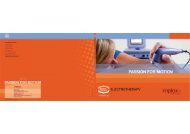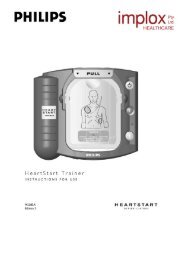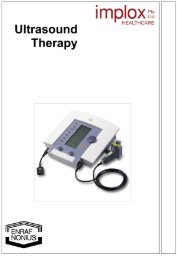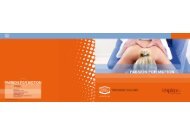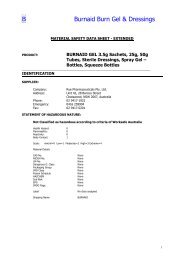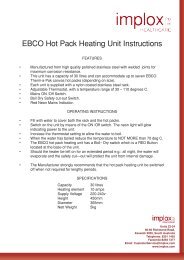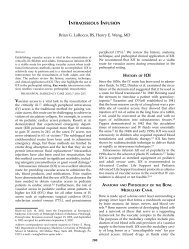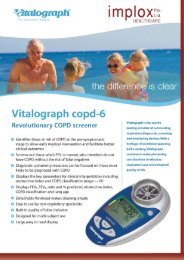Low and medium Frequency Electrotherapy - Implox
Low and medium Frequency Electrotherapy - Implox
Low and medium Frequency Electrotherapy - Implox
Create successful ePaper yourself
Turn your PDF publications into a flip-book with our unique Google optimized e-Paper software.
9 INDICATIONS AND CONTRA-INDICATIONS<br />
This chapter provides an overview of all possible indications <strong>and</strong> contra-indications for the current types described in<br />
this book. The information is arranged according to the physiotherapeutic objectives, such as ‘restoration of muscle<br />
sensation’ or ‘improvement of local blood circulation by influencing the sympathetic nervous system’, followed by the<br />
technical requirements for diagnostics or therapy.<br />
The appropriate current types for each indication are shown as abbreviations. The following abbreviations are used:<br />
DD = diadynamic current<br />
2-5 = 2-5 current (Ultra-Reiz or Träbert current)<br />
D = direct current (galvanic current)<br />
DI = direct current as used for iontophoresis (8000 Hz <strong>medium</strong>-frequency direct current)<br />
ID = intermittent direct current<br />
FC = faradic current<br />
IF = interferential current (4000 Hz <strong>medium</strong>-frequency current)<br />
RS = Russian Stimulation (2500 Hz <strong>medium</strong>-frequency alternating current)<br />
TENS = TENS current<br />
9.1 Indications<br />
9.1.1 Diagnostics<br />
Electropalpation for:<br />
• locating pain points (D-DD-IF-TENS);<br />
• locating trigger points (D-DD-IF-TENS);<br />
• locating hyperaesthetic regions (D-DD-IF-TENS);<br />
• locating motor trigger points (IF-TENS);<br />
• plotting strength/duration curves (ID);<br />
• multiple stimulation of partially denervated muscle tissue (ID-FC).<br />
9.1.2 Therapy<br />
A. Treatment of conditions where pain is predominant (DD-2-5-IF-TENS):<br />
• pain points;<br />
• trigger points;<br />
• hyperaesthetic regions.<br />
Possible causes:<br />
1. Disturbance of the autonomic balance, leading to impairment of circulation <strong>and</strong> organ functions;<br />
2. Post-traumatic <strong>and</strong> post-operative conditions such as:<br />
• contusion;<br />
• distortion;<br />
• luxation;<br />
• rupture;<br />
• contracture resulting from immobilization.<br />
3. Rheumatic conditions such as:<br />
• arthrosis, spondylosis;<br />
• peri-arthritis, bursitis, tendinitis etc.;<br />
• myalgia.<br />
B. Treatment of conditions where an autonomic imbalance is predominant (DD-2-5-IF-TENS):<br />
• peripheral circulation disorders;<br />
• autonomic syndromes.<br />
38<br />
Including:<br />
• shoulder-h<strong>and</strong> syndrome;<br />
• Raynaud’s disease;<br />
• Buerger’s disease;<br />
• Südeck’s dystrophy;<br />
• neurological conditions;<br />
• myalgia.



